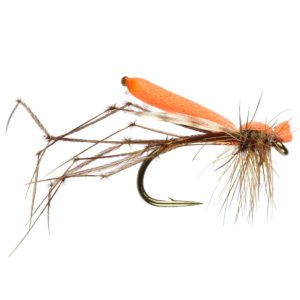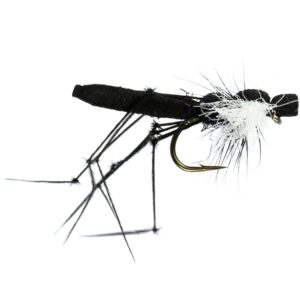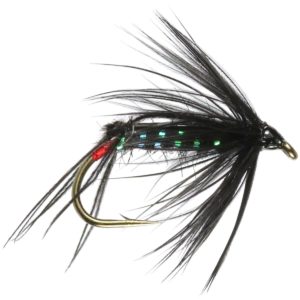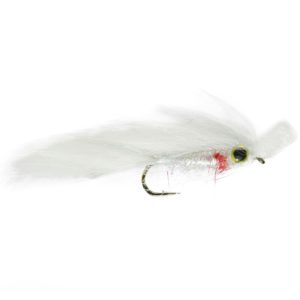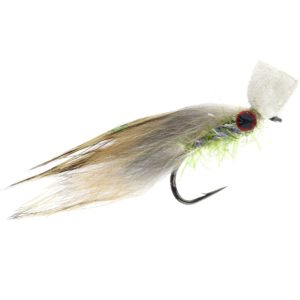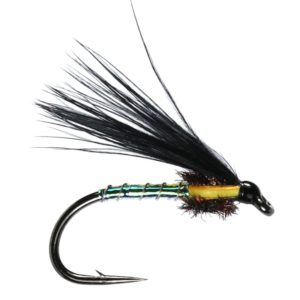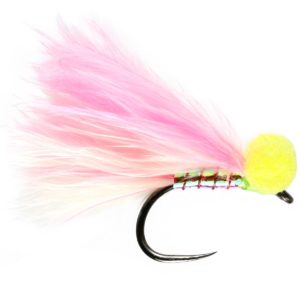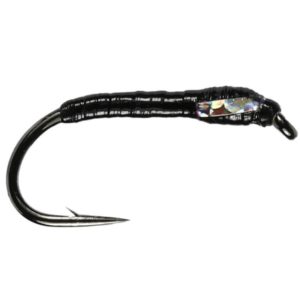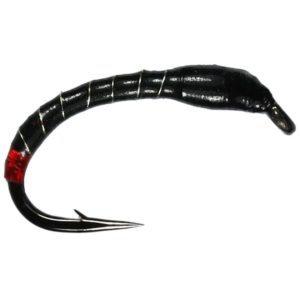August is an exciting month to target trout, with an abundance of food readily available; rainbow trout are feeding up and are in tip-top fighting condition. The late summer nights can produce some spectacular visual action as trout start feeding heavily on daddy long legs and with the increasing appearance of pin fry later on in the month, it creates plenty opportunities for us fly anglers to take advantage of.
The best trout flies to use in August consist of a combination of daddy long leg patterns, buzzers/nymphs patterns and later on in the month focus your attention on pin fry imitations.
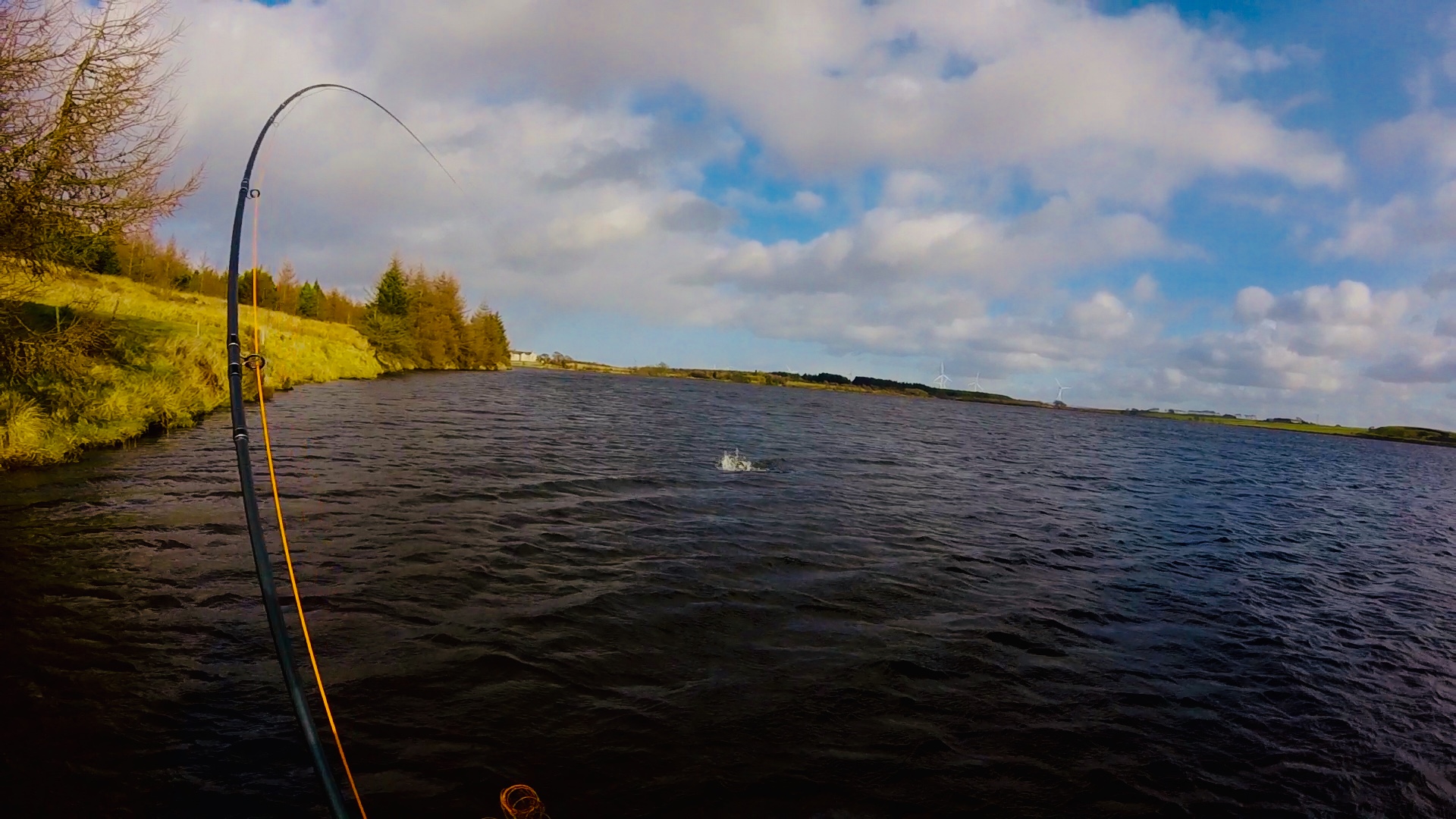
The larger profile daddy pattern proved successful on this heavy ripple.
Dry Fly Setup
August is by far one the best dry fly fishing months, with the late summer evenings producing some of the best surface activity you’ll see all year. Dries are one of the most exciting fly fishing methods to use, with tail smashing, aero acrobatics and stealthy lips. This visual way of fishing is always a firm favourite amongst fly anglers.
Recommended Flies
- MINI ORANGE FOAM DADDY
- MINI FOAM DADDY
- BLACK FOAM HAWTHORN
- BLACK HOPPER
Dry Fly Retrieves
When it comes to retrieving these flies across the surface, there are a few options available. Try and leave the flies static on the surface. If the trout are highly active, they will hit those static flies hard, so be prepared to hold on tight.
An initial pull to cause a bit of disturbance on the surface to try and trigger a response followed by a slow retrieve is what you want to achieve.
Dry Fly Techniques
If fish are actively feeding on the surface, you can opt for a single dry fly presentation or a team of flies. If you’re a newcomer to the sport, a single dry will be more beneficial as it will eliminate any unwanted wind/cast knots.
If you’re a more experienced fly angler then fishing a team of dries can be advantageous. Keep your team of flies down to two maximum as it will eliminate tangles and it will allow you to target rising fish more accurately.
Use a strong copolymer or fluorocarbon leader, using a stronger and stiffer leader material will minimise the chances of the daddies spinning during the cast. This happens due to the poor aerodynamic properties of this style of fly.

The stiffness of fluorocarbon helps aid dry fly presentation.
If you choose to fish a team of foam daddies we recommend mixing the colours up. Fish a natural tan coloured daddy and an orange coloured daddy. Fish the orange daddy on the tip as it provides a more visual indicator and it is easily seen on the surface of the water at a distance. Fish the natural pattern as your top fly.
Even if the fish are not actively feeding on the surface, it is possible to bring fish up to the surface with the larger profile fly. However, sometimes it’s purely just curiosity that tempts fish up from the depths. In these instances, we would recommend fishing something off droppers, like nymphs or buzzers (fishing a washing line).
Using droppers in between your two floating daddies allow you to target the first foot of water below the surface. This smaller bite-sized snack can usually persuade a curious trout to feed.
If you do choose to fish buzzers or nymphs on your droppers, slow the retrieve right down, a slow figure of eight will keep a more natural presentation.
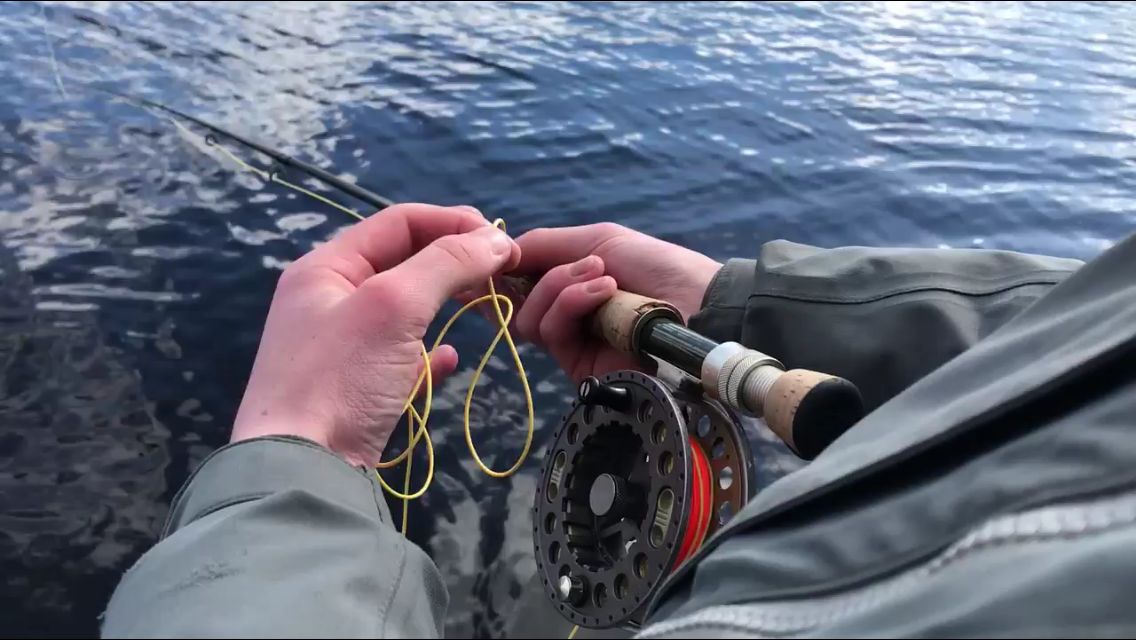
A slow figure of eight retrieve.
If there is a ripple or slight wave on the water, larger daddy patterns are recommended. Not only do they create a larger silhouette on the surface but they move a lot more water when retrieved, making them far easier for trout to target.
If the water is flat, calm and fish are actively showing, try scaling your fly size down. This can be highly effective if the trout are not fully committing to a larger dry fly.
To optimise your chances, you can also fish a 3 or 4 fly cast and fish a buzzer or two in-between on droppers.
TOP TIP: If there are terrestrials such as daddies present on the water but the fish are not actively showing on the top, we can try and provoke a fish by covering water in a methodical manner. Try covering as much water as possible by casting in a fan shape. This allows us to break down small bodies of water into fishable chunks and allows you to fish them more efficiently.
Try leaving the fly on the surface of the water for 15-20 seconds then lift the fly off and move 2-3 feet (left or right) to cover the water effectively.
Pin Fry Setup
Midway through the month, pin fry start to show more consistently in numbers around our stillwaters. These small high protein fish snacks drive trout crazy and sometimes it feels like the trout have tunnel vision when the fry appear in abundance.
Recommended Flies
- FRY SUSPENDER
- STICKLEBACK FRY
- PEARLY CORMORANT
- PTN FRY NYMPH
- CANDYMAN BOOBY
Fishing pin fry imitations can be done either on a single fly or a team of flies. One thing to note though, pin fry imitations can pick up the better fish from time to time. So it’s worth considering using only 1 or 2 flies max to increase your chances of landing these larger specimens.
However, in this article, we will be showing a few different variations that can be implemented.
The booby does not resemble a pin fry, however, the pearlescent body gives off the same flash as a small pin fry would and the fluorescent colours of the booby can grab the attention of passing fish.
Fishing the booby can be a highly effective and versatile fishing method. Fishing a booby on a floating line can give you a dry fly presentation, while short snapping strips of the line can create a popping effect across the surface of the water. This can be a devastatingly effective method on its day. If you find that fish are coming up to the booby but not committing to it, try fishing a dropper or two with a nymph or buzzer attached. The smaller fly might be enough to entice the take.
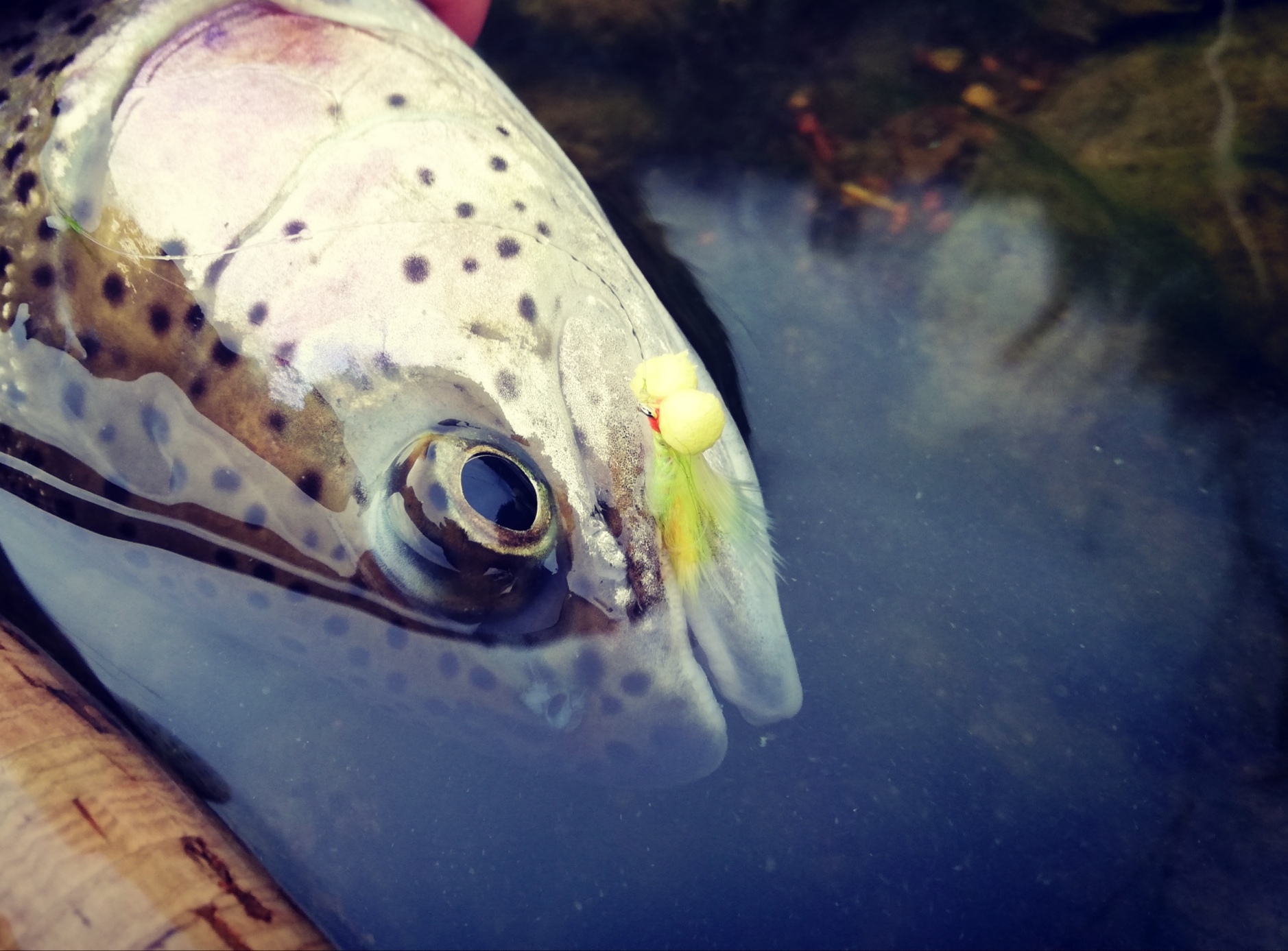
This trout couldn’t resist this fluorescent point fly.
Pin Fry Techniques
Look at targeting boat harbours, bay shorelines and weed beds. Areas such as these provide cover and sanctuary for fry. You’ll know when trout are actively feeding on fry as the trout will crash across the surface and the water will be boiling with commotion.
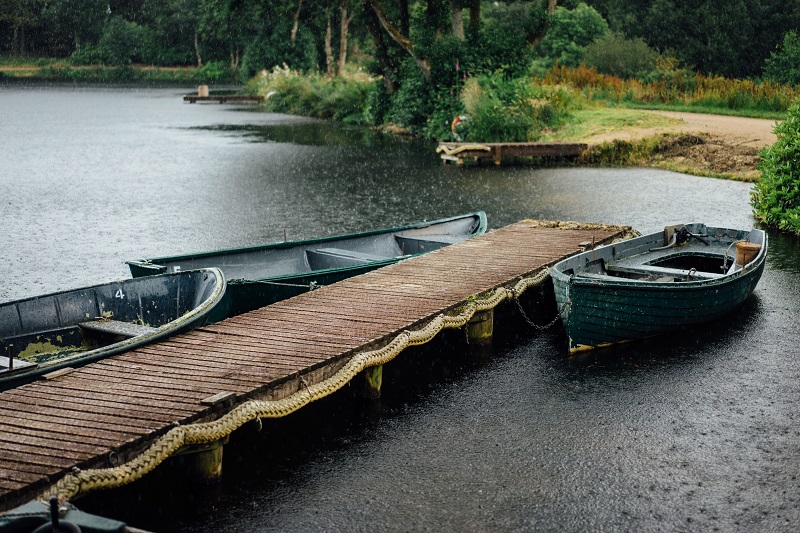
Boat jetties are a great area for fry to congregate.
Pin Fry Retrieves
When fishing a pin fry imitation, try varying the retrieve, we want the fly to resemble a fleeing baitfish. Try a slow figure of 8 retrieve followed by short sharp pulls, this retrieve will imitate a marauding fry that swims off frantically. The change in retrieve can be the trigger required to induce a take.
Buzzer Setup
If you find yourself fishing in extremely hot conditions, the chances are the trout have headed to deeper, cooler water and have possibly switched off. In this scenario, it’s best to try and hang a fly right in front of a trout’s nose to entice a take. In these circumstances, you have a few fishing options available to you.
Recommended Flies
- SILVER CHEEKS BUZZER
- 3D BLACK EPOXY BUZZER
- TAZER BUZZER
Buzzer Retrieves
Buzzers are designed to be worked slowly, a slow figure of 8 retrieve is all you require in most scenarios. If you are faced with flat calm conditions, letting your buzzers hang static on a fast sinking line can be effective too. Remember to hold on, the takes can be devastating!
Buzzer Techniques
You can use a floating line with a team of 3 or 4 buzzers to target the upper layers of the water column, using a very slow figure of 8 retrieve.
If you are looking to target the mid-layers, use the same method as above on a sink tip or intermediate line.
If the fish are much deeper, implement a DI7, DI8 or Booby Basher line to get down quickly. Most anglers don’t have much confidence in fishing a team of 3 to 4 buzzers on really fast sinking lines and prefer a bright visual fly on the point as an attractant. However, fishing with a team of buzzers can be a very deadly method on its day.
TOP TIP: To judge the depth you’re fishing more accurately, we recommend looking at fly lines with depth marker i.e. Airflo’s Sixth Sense and Forty Plus range are a popular choice with fly anglers.
As we stated earlier, most anglers will opt for a brightly coloured fly like a booby or a FAB as their point fly and this within itself is a deadly setup. Not only does a booby or FAB give you a bright visual attractor as your point fly but it also allows you to slow down the sink rate of your flies ever so slightly. This extra hang time can give lethargic fish enough time to hone in on your descending flies.
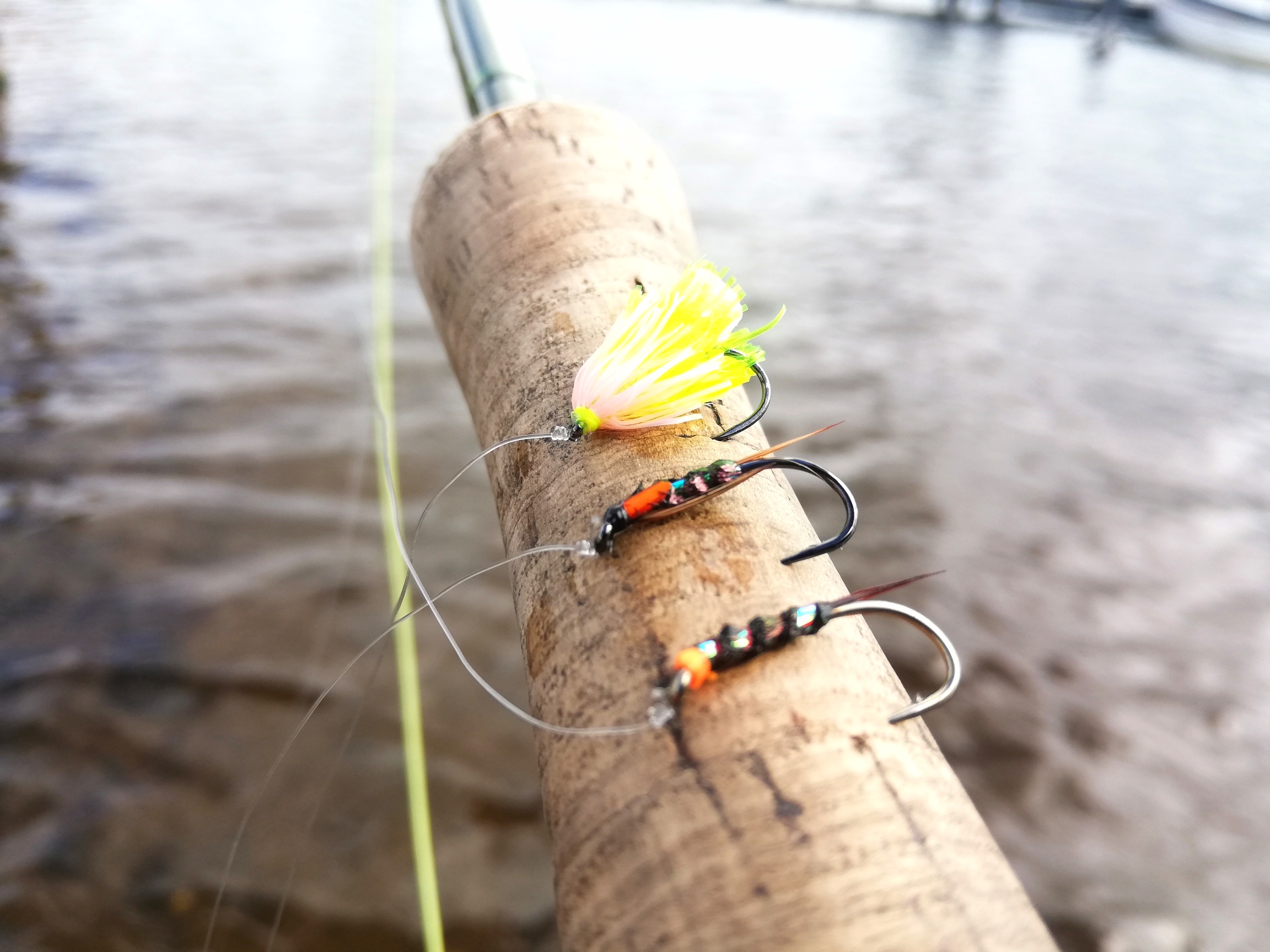
A FAB on the point with 2 nymphs on the droppers
Round Up
Hopefully after reading this article it gives you a few different setups and flies to contemplate implementing in your August trout tactics. Each of the above methods will allow you to target various depths and use some of our go-to trout patterns. Why not give them a go!
Steven McVean – Angling Active Shop Floor Manager/Former Scottish Youth International


